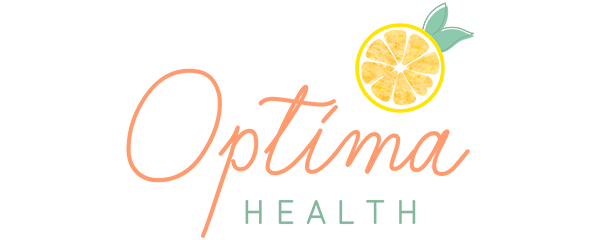What is acne and why is it causing me grief?
Acne is localised skin inflammation due to blocked sebaceous glands. It can manifest in many different ways. Some people get small red pimples, while others get to be bigger pus filled cyst-like spots. Acne is choosy but can tell you a whole lot about why its there in the first place!
There are many causes of acne.
- Hormonal issues
- Puberty onset
- Poor liver detoxification
- Poor gut health
- Poor diet and lifestyle
- Stress
- Medication
- Underlying illness such as polycystic ovarian syndrome
Lets take a few and look at them in more detail.
Hormonal issues could be due to a host of factors causing varied body responses. Acne can be caused by excess androgen (male sex hormones) secretion, for example, which causes excess oil/sebum production in the skin giving us an oily and acne prone T zone, back and chest.
Balanced progesterone helps to prevent acne by regulating the amounts of androgens within the body. However, if one becomes oestrogen dominant and progesterone is low, trouble begins! This is often seen in cases of polycystic ovarian syndrome and other menstrual disorders
Some medication can also cause acne while others work to reduce it. To take the oral contraceptive pill as an exmaple, a progesterone-oestrogen OCP reduces acne whilst a progesterone only OCP can exacerbate acne. The former work to reduce acne as the oestrogen component increases levels of sex-hormone binding globulin (a protein made by the liver), which decreases levels of free testosterone (i.e. androgens) in the body, which helps to regulate oil/sebum production.
Decreased liver detoxification can also result in acne. The liver is like a vacuum, it takes harmful substances and pollutants, purifies them and then eliminates them from the body via our stools, our urine or in bile. When the liver becomes overwhelmed, it becomes sluggish causing toxins to enter the bloodstream quicker than the liver can act to break them down. When the liver is not detoxing efficiently, hormone secretion decreases, hence mixed messaging and the formation of unwanted spots.
A poor diet, inflammation and/or stress can result in imbalanced blood sugar levels. This can cause an increase in Insulin like Growth Factor 1, which is implicated in androgen precursor hormone conversion, consequently increasing the risk of acne. This causes an increase in growth hormone production, which further exacerbates acne (with increased oil production).
What is your acne telling you?
Face mapping has been around for thousands of years. It is a complex art surrounding the belief that all parts of the body are intrinsically connected. Chinese medicine practitioners share the understanding that the location of specific spots and blemishes, uneven texture and colour, lines etc…all can be indicative of deeper issues within the body.
Lets examine a few.
Breakouts around the chin/jaw area can be indicative of hormonal imbalance, stress and/or a congested colon or poor gut health. The chin is linked to the small intestine, where the vast majority of digestion occurs. Hence why pimples in this area are likely diet-related. Avoiding rich, oily and dairy-based foods for a few days should have your skin clearing up and then focusing in implementing a high fibre, wholefood based diet and increasing your water intake will help maintain digestion long term.
T-zone breakouts can be indicative of liver health. Breakouts here can be helped by reducing alcohol and increasing water and liver cleansing foods such as beets, garlic, carrots, dark leafy veg, apples, broccoli, cabbage and avocadoes.
Dark under eye circles or puffiness can result from dehydration or tiredness and in more severe cases, adrenal exhaustion. Reducing caffeine, increasing water, eating a balanced and nutritious diet, catching up on sleep and reducing stress will all help to improve this area.
Forehead lines or spots can be indicative of congestion, mostly within the colon and the gall bladder. Antioxidant rich foods should help combat this so implement more brightly coloured fruits and vegetables – especially those coloured yellow, orange and red, berries, dark leafy greens and green and other herbal teas.
Breakouts on the upper cheeks can be due to bacteria from your pillowcase or your phone. Ensuring these are cleaned regularly will help reduce bacteria build up. Breakouts on your lower cheeks can be a sign of heart issues (such as increased blood pressure), poor nutrient absorption, poor dental hygiene and/or poor metabolism. Consuming a well rounded, nutritious diet will assist in this area as well as reducing sugary foods and drinks and ensuring you brush your teeth twice daily and floss on a regular basis.
Deep laugh lines and breakouts in the nasolabial area can be indicative of poor respiratory health and/or a congested colon that is impeding on efficient lung function. The lungs and the colon work hand in hand, hence it is important to ensure both are working optimally. Implementing yoga will help keep things moving (in the colon area) and will also help open up the lungs to allow more airflow. Keeping the body more alkaline by reducing or avoiding foods that make the body more acidic e.g. alcohol, sugar and caffeine and increasing foods such as dark leafy greens, will help combat this.
It is important to remember that our cells are constantly regenerating. Hence, taking the positive steps outlined above towards improving your diet and lifestyle can potentially reverse any skin damage and help get you on your way to a more clear and glowing complexion.
For more check out my Ask Alex on skin health.
If you feel like you need a helping hand in this area, check in with a nutritionist to make some tweaks to your diet and lifestyle. Often, small changes lead to big differences.
Happy reading and if you’ve got any handy spot tips, let us all in on your secret below!

1Pingbacks & Trackbacks on Ask Alex: What is acne and what is it telling you?